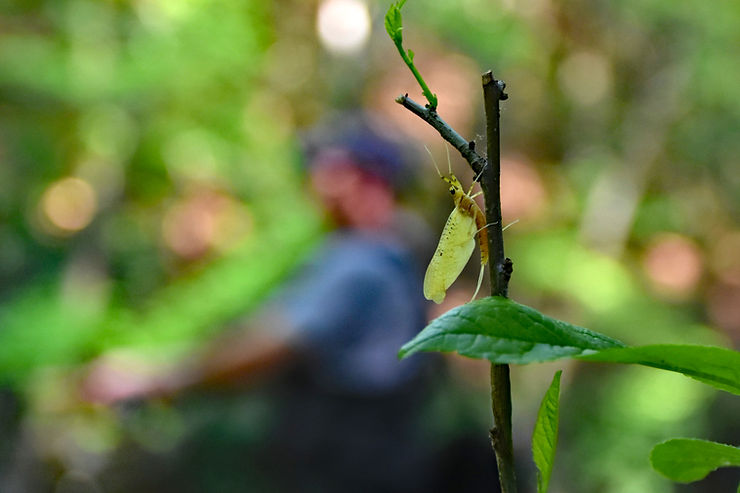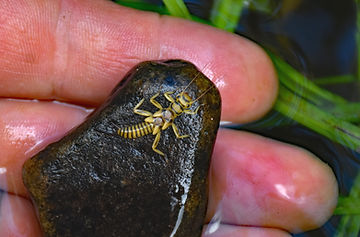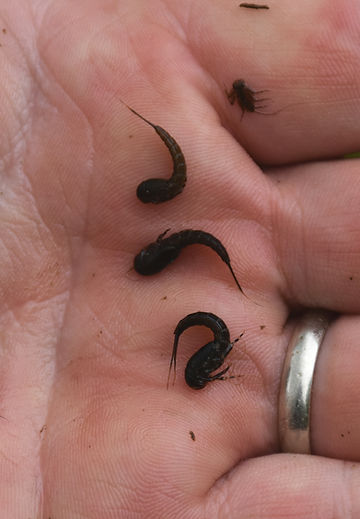The Bugs We Love

It’s not often that nobody complains about bugs in their hair, but that was the case on First Fork Sinnemahoning that evening. Huge clouds of Gray Fox mayflies floated in the twilight above the stream. They flitted and landed on my arms, got caught in my hair, and occasionally I even swallowed one. The trout were quite happy about the situation. So were the fishermen.
Few things are more exciting than a mayfly hatch, and yet talk to any veteran fly fisherman and they’ll tell you the same thing. Those hatches get rarer and harder to predict every year. And many streams that contained blizzard-like hatches 50 years ago are mere shadows of themselves today. Eventually you have to start wondering…what’s happening to the bugs we love?
Worldwide Decline
Mayfly declines aren’t specific to Pennsylvania, or even to this region. It’s a nationwide, and worldwide, problem.
In England, the Salmon and Trout Conservation (STC) is conducting a three-year survey of rivers. Preliminary findings suggest that populations of blue-winged olive mayflies, once abundant in the British Isles, have practically vanished from a number of English rivers. Fine sediment and phosphate pollution, in the form of run-off from agricultural areas as well as untreated sewage, are killing approximately 80% of the insect’s eggs. The most troubling aspect of this is that much of the pollution could be considered “minor” as it registers below guidelines set forth by environmental agencies.
Aquatic insects are the true indicators of water quality. As the STC writes on their website (salmon-trout.org), “They live for months, sometimes years, below the surface in their nymph stages. Because different insects have different tolerances to pollution, the presence or absence of certain species is a simple but effective way of finding out what pressures a river might be experiencing.”
Stream Samples
This year I started carrying a pocket-sized seine with me on the stream. When the spirit moved me, I set my rod aside and turned over a few rocks and sifted the current to see what insects showed up. I quickly discovered a direct correlation between a stream’s remoteness and its aquatic life. Less human encroachment typically meant more abundant and diverse species.

Certain species, such as various sizes and colors of stoneflies and caddisflies, were present to some degree in all of the waters I’ve sampled so far this year, which is really no surprise. These two species are the most resistant to pollution and can thrive in water unsuited for many mayflies. What concerned me was the overall lack of some species of mayflies in waters that used to have blizzard-like hatches of those same insects when I was a kid. It didn’t take long to realize why I’ve had a hard time hitting some of those hatches the past few years – the flies just aren’t there.
I spent a four-day weekend in northcentral PA in late May hoping to fish the Green Drake hatch. I sampled two streams, both with the same water temperature, yet each one traversed much different terrain. One was wilderness while the other flowed through multiple residential areas that have grown substantially the past 20 years. The remote stream was teeming with Green Drake nymphs. Every time I dipped the net into the water, I came up with a handful of these over-sized beauties. Sampling the other stream, I still found Green Drake nymphs, but only about a third as many as found at the other location.
I’ve fished both streams since I was a kid, and I’ve hit the Green Drake hatch on both numerous times over the years. However, whereas the hatch on the remote stream has remained predictable and abundant, on the other it has become spotty and difficult to time.
The overall diversity of aquatic life found on the remote stream was overwhelming, but it also made me a little sad. Someday, as human encroachment expands in that area, will the aquatic life in that stream diminish? Time will tell, I guess.

Can Aquatic Life Recover?
In truth, many things can impact aquatic life. Studies on California, Maryland, and Virginia streams have all concluded that warm water and drought negatively impact mayfly populations – only a couple of years ago, Pennsylvania experienced a major drought and some streams were temporarily closed to fishing due to high water temperatures. The good news is that those studies also found that following droughts, mayfly populations often rebound within a year or two. The good news should be tempered, however, by adding that those rebounds were most successful in forested, headwater stream networks than in areas of forest fragmentation.
Nowadays, it’s difficult to find privately-owned land that’s not fragmented. Timbering, mining, and gas drilling all take their toll, and to be clear, I’m not against any of those practices. But as I get older, and perhaps more nostalgic for the good-old days of abundant mayfly hatches, I realize the need for continuing these practices in a responsible and well-regulated manner – not to mention stiffer penalties for offenders. And sometimes, such as in England, environmental agencies need to reevaluate current guidelines and establish new ones based on the findings of scientists and conservation groups.
Of course, all of this is about more than just experiencing the fun of fishing over a mayfly hatch. In essence, aquatic insects represent the foundation of the ecosystem. Without them, fish, birds, and river mammals would struggle to find food, which could then set off a chain-reaction that affects everything else, including humans.
I’m not an environmentalist by nature, but I am a fly fisherman, and sometimes the two must be combined, especially in regards to preserving our natural resources and the bugs we love for future generations.
Sign up for the Dark Skies Fly Fishing e-newsletter
It's free, delivered to your inbox approximately three times each month. Your information is always kept private and used for the sole purpose of keeping you up to date on blog posts and specials in the online store.
Sign Up Now